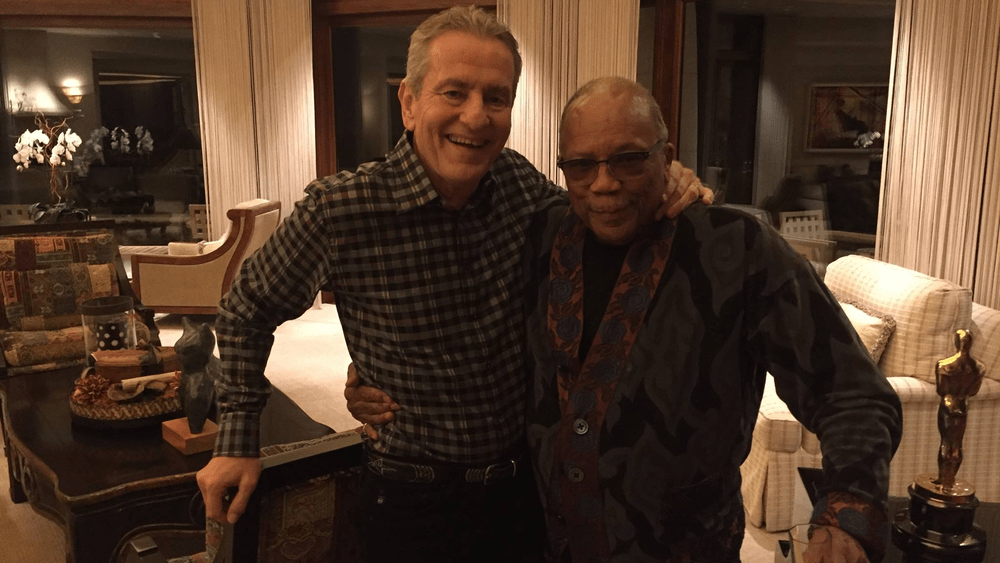Jerry, your parents were both musicians. Your brothers also played instruments. Was it always clear to you to follow in their footsteps?
No, not necessarily, but as I grew older and realized I had some god given talent, along with my parents being able to afford the luxury of lessons with a member of the Chicago Symphony when I was in high school and Interlochen Music Camp, I knew trumpet and music was the only thing I wanted to do.
When you were at Indiana University, you met another trumpeter, Larry Hall. A friendship that took you to new musical shores and some time later to Hawaii. Did you have to think long when he called and invited you to drop out of university and leave for the unknown?
Larry happened to call when I was in a lesson with our teacher, William Adam. After I got off the phone from Larry asking if I was interested in joining him in Hawaii, I asked Mr. Adam what he thought. His comment was “You’ve learned all you’re going to here and with Larry you will be great.” So I had his blessing. My parents were obviously not happy with the decision but after them seeing my success, they were glad I went.
Your stay in Hawaii is inextricably connected with the legendary group Seawind. Tell us how you formed the group back then.
Several students from Indiana University including Larry Hall, Larry Williams, and Kim Hutchcroft, went to Hawaii to play Las Vegas type shows for the tourists. But after a while of playing the shows, everyone wanted to play some other types of music, so we started playing with a small group for free around Honolulu. This small group included Larry Hall, Larry Williams, Kim Hutchcroft, the bass player of Seawind, Ken Wild, and drummer and song writer, Bob Wilson. A few people from this group heard Pauline Wilson sing and decided to officially form the group which became Seawind.
After Seawind moved to L.A. an encounter took place which had a significant influence on your career as a musician and arranger. Quincy Jones had heard Seawind play in L.A. and invited you to work with him. Do you remember his phone call? What was your first reaction?
Seawind moved to Los Angeles in January of 1976 and within a couple months I got a call from Quincy Jones. I have no idea how he got my home number, or how he knew who we were. But he asked me to play and arrange one song, “Midnight Soul Patrol” on his “I Heard That” album. Of course I said yes immediately.
Like you, Quincy is a trumpeter who started his career as a jazz musician. Did this common background make it easier to work with him?
I’m sure that Quincy, being a trumpet player and understanding the recording and arranging process, gave us a commonality in the studio. I am a huge Clifford Brown fan and Quincy knew him well, so Clifford was one of our first discussions which I’m sure helped cement our relationship.
How can we imagine your work with Quincy in the studio? Did he give you much creative freedom?
Quincy is the perfect producer in allowing the people he includes in his projects to do what they do best, and he always gets the very best out of people because of that. For me, Quincy would send a copy of the record, usually the track and a rough vocal before any overdubs, and allow me to do whatever I thought was appropriate. What an incredible opportunity for an arranger and player!!
Three years ago we unfortunately lost the legendary song writer Rod Temperton, with whom you have worked closely for decades. How do you remember him?
Rod was one of the most personable people I have ever met. He treated everyone as an equal and was genuinely interested in everyone he met. And to his song writing, I’ve never seen anyone work harder or longer making a song come to life. I spent many years in the studio with Rod and maybe more time with him on holiday, getting to really know what an outstanding human being he truly was.
Quincy, Rod and you have been involved in countless world hits. “Rock With You” by Michael Jackson was one of them. How was your collaborative process on this song for example?
Quincy wanted me to arrange strings and horns on “Off the Wall”, but Seawind was on tour on the east coast and I told him I didn’t really have the time or opportunity to write strings and horns. He said ok about the strings but asked if it was possible to write and record the horns. Kim, Larry Williams, and I had took an overnight flight from Boston back to L.A. to record the horns with Gary Grant and Bill Reichenbach to the section. Rod had written the songs but unfortunately wasn’t there when we did the horns.
Was Michael Jackson really a perfectionist in the recording studio? How did you experience him?
With Quincy as producer, Michael mostly let things go with what I had written, with a couple additions he wanted. Quincy had the last word on what we played and recorded and I deferred to him always.
In 1979 you were involved as a trumpeter and arranger on the legendary “I Am” album by Earth, Wind & Fire – the beginning of a long collaboration. None other than David Foster made this possible. Tell us about it.
I had worked with David on a couple previous projects, Bill Champlin’s “Single” being one, and also with David as a player on many sessions. When he was recording the songs he had written for the “I Am” album, he called and asked if I would be involved. I would go to his house and spend hours with him writing the horns and strings. David has always been incredible in the studio as a player, arranger, song writer, and producer, and to this day he is one of the finest I have ever worked with.
How do you remember the late great EWF founder Maurice White – as a human and a musician?
Maurice White was a visionary in the studio. Being a schooled musician, I always wanted the right voicing on the chords and the right notes in any melody lines for the horns. But Maurice showed me a few times when he sang something he wanted to try in the horns, that a melody note can be more important than a theoretically correct note. And Maurice also would allow me freedom to write and arrange as I saw fit, and in the studio he would be a major influence on how and what we played. I felt so fortunate to have worked with him.
Jerry, you were literally in the center of the storm when the L.A. Sound conquered the world. You’ve worked with everyone from Toto to Chaka Khan to Michael Jackson. From your point of view, what was so special about this musical epoch?
It was the coming together of so many musical styles from funk, Motown, R&B, and pop with great artists, song writers, producers, engineers, and musicians. When all that happens, it is easy to make great music.
You’ve won countless awards, including six Grammy Awards, in your career spanning more than 40 years. How important are these honors to you? Were they a motivation for your work?
I have never been motivated to win any award, but only wanted to give 100% into each project, regardless of the stature or fame of the artist.
After so many years of professional experience: What is the secret of a great horn arrangement? Do you have a personal formula?
The secret of a great horn arrangement starts with a great song. I have written what I thought were great arrangements on many songs that no one ever heard because the songs just weren’t good enough. A personal formula doesn’t necessarily work on every song, but I like to stay away from any vocals when possible, answer the main chorus line with a memorable horn part, of course, have great people to help with my vision of what it should sound like, a great engineer, and a producer who will allow me freedom to do my thing. Quincy, David Foster, Maurice White, and Jay Graydon as producers, Bruce Swedien, Humberto Gatica, Tommy Vicari, and Andrew Hey as engineers, and countless numbers of great song writers and artists like Michael Jackson, Al Jarreau, Chaka Khan, and Rod Temperton. And last, but certainly not least, are the players that I have worked with for my career – Gary Grant, Bill Reichenbach, Larry Williams, Kim Hutchcroft, Larry Hall, and Dan Higgins.
Jerry, one last question: Imagine you wanted to teach me the power, sophistication, and essence of trumpet playing with a single song. Which song of which artist would you play and why?
My trumpet influences go from classical symphonic C trumpet to bebop jazz to lead trumpet to small horn section studio pop playing, so to cover all that in one performance is nearly impossible. Adolf Herseth of the Chicago Symphony was an early love with that beautiful sound, as was Maurice Andre and his amazing piccolo trumpet playing, and recently the unbelievable virtuosity and musicality of Sergei Nakariakov. Clifford Brown was also early on in my love of jazz trumpet playing as was Freddie Hubbard. Snooky Young with Count Basie pioneered the way with swinging lead trumpet and Chuck Findley is the ultimate in the studio. Now if I could only find a record with all of them on it.
Thank you very much for the interview.
Photo: Jerry Hey
This interview was published for the first time on March 8, 2019

